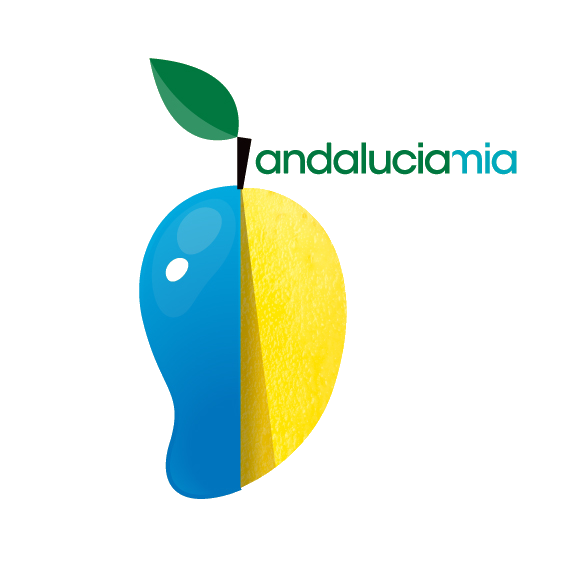Moscatel wine in Malaga Province
Famous grapes
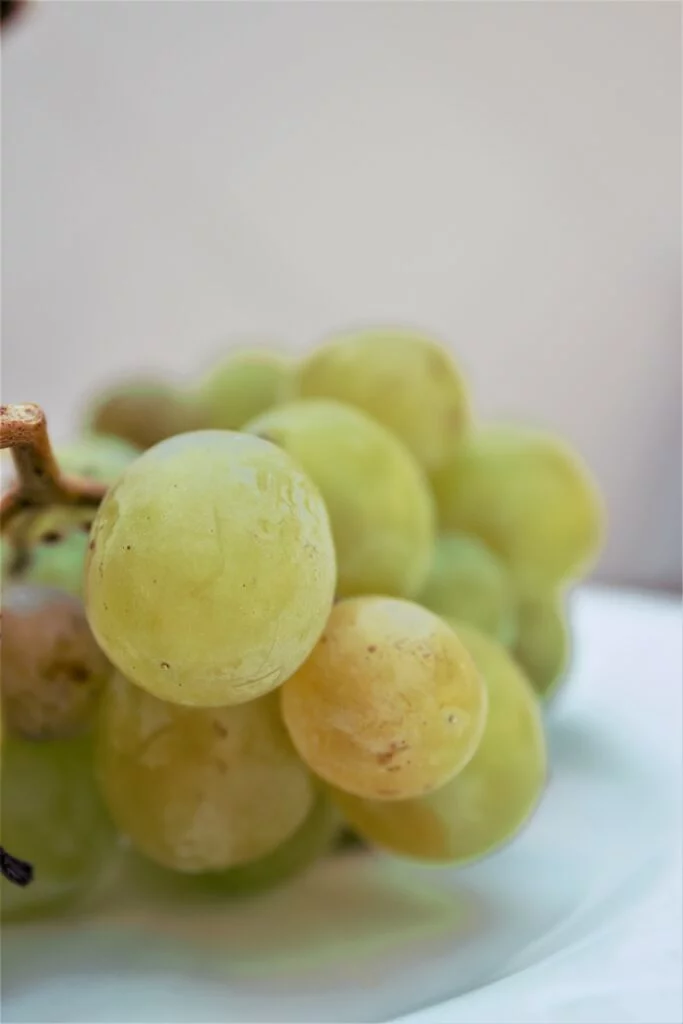
The Moscatel, Muscat of Alexandria, grown in the province of Málaga, in Axarquia
In this article you will find the essential information about the incredible cultivation of the Moscatel – Muscatel – wine in Malaga province :
- Origins of the Moscatel vine
- The cultivation of the Moscatel vine
- The most traditional harvesting system in Europe
- Historical elaboration of Malaga wine
- The Wine and Sun route with a guide
- The Raisin route (Ruta de la Pasa) with a guide
- Fiestas and ferias around the grape and Moscatel wine
- Photos of vineyards, moscatel grapes and pasa in Axarquia
- Here is another vine, rare and endemic to Axarquia
- Some useful links
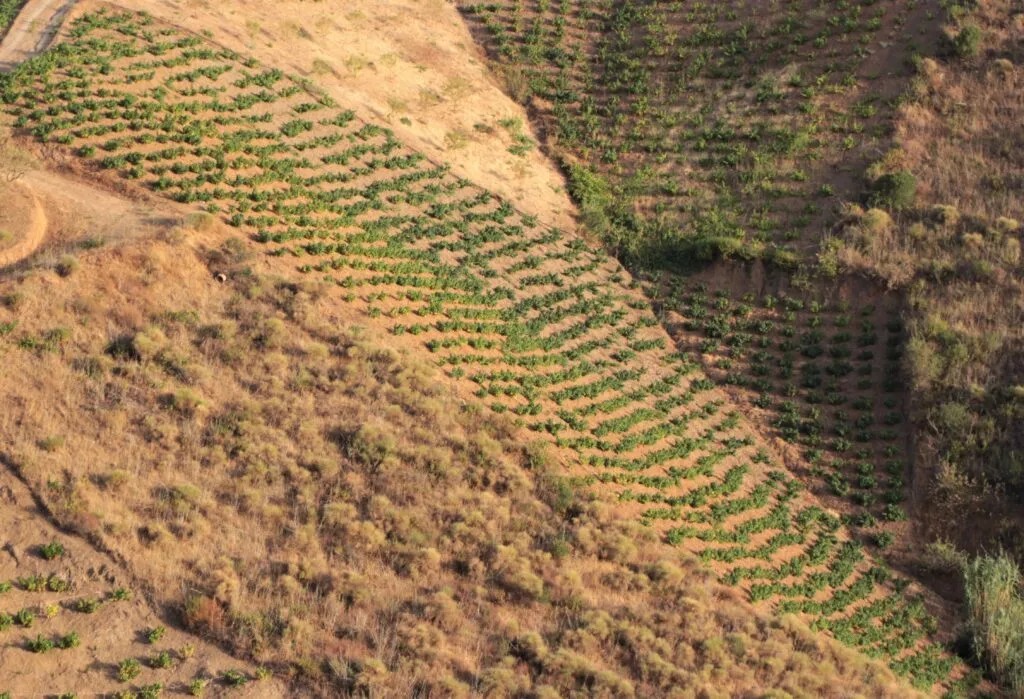
The origins of the Moscatel wine in Malaga
This is one of the wonders of Axarquia: the Muscat of Alexandria, the “moscatel“. The history of Moscatel and its cultivation is unique in many ways.
It seems that it was the Phoenicians who brought it from Egypt when they settled on the Costa del Sol (around 1000 BC). Then the Greeks of Phocaea, 700 BC, improved its cultivation, then the Romans improved it further, and the Arabs preserved this culture.
The culture of the Moscatel vine
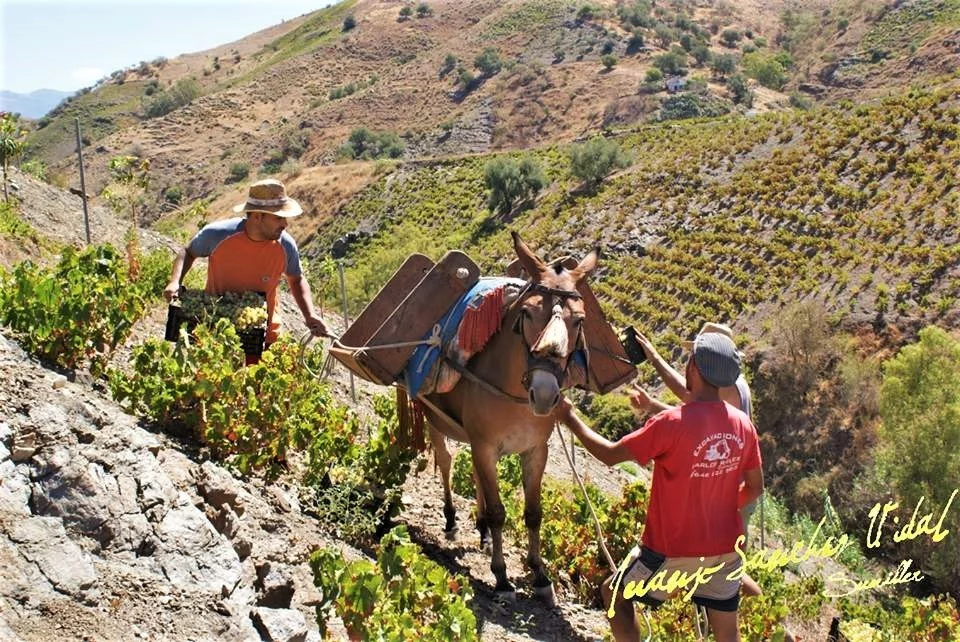
This cultivation of this grape has not changed for 3 centuries. The grapes are harvested by hand and then loaded onto mules.
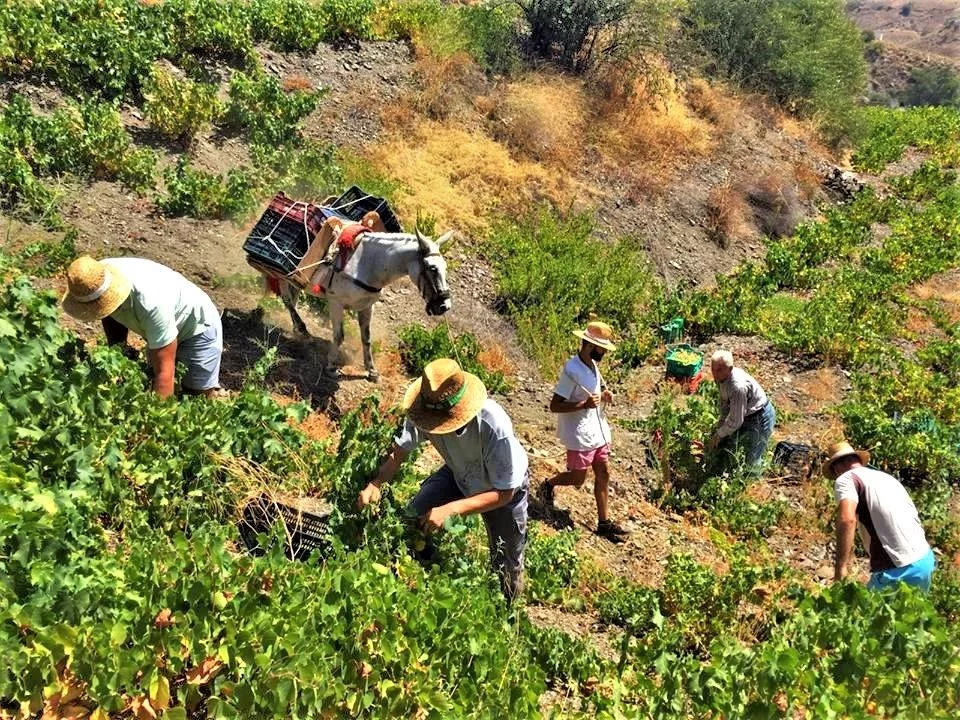
Most of the grapes are taken to the paseros. This is where the grapes are dried to produce sweet wines.
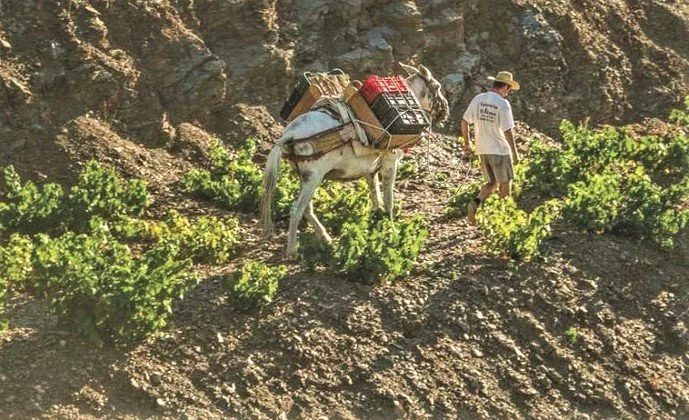
At dusk, it is covered with a cloth to avoid any risk of dew on the grapes. Part of the grapes will be used to make DO Malaga and DO Sierras de Malaga wines. In the photo below you can see the tarpaulins, toldos, which will cover the grapes at night or in case of rain.
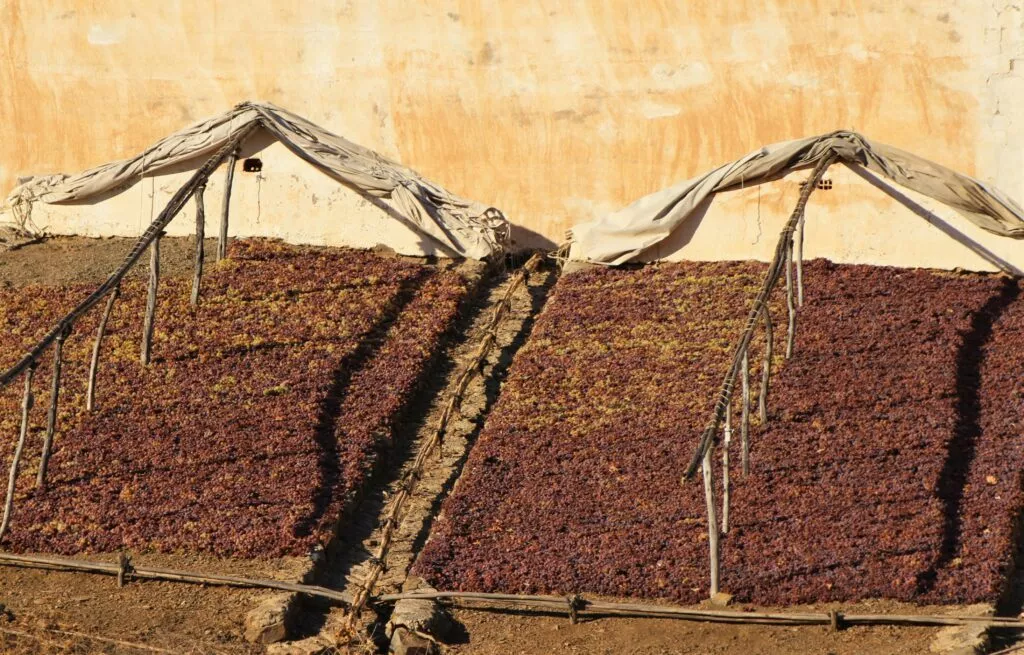
The other part of the grapes will be dried for another 2 weeks. Once dry, each grape is cut one by one! The dried grape is ready to be consumed, it is called here, the Pasa.
Europe’s most artisanal harvesting system
This culture and its type of harvest have remained intact, and absent of any mechanization. The reason for this lies in the orography of the growing areas (see photos below).
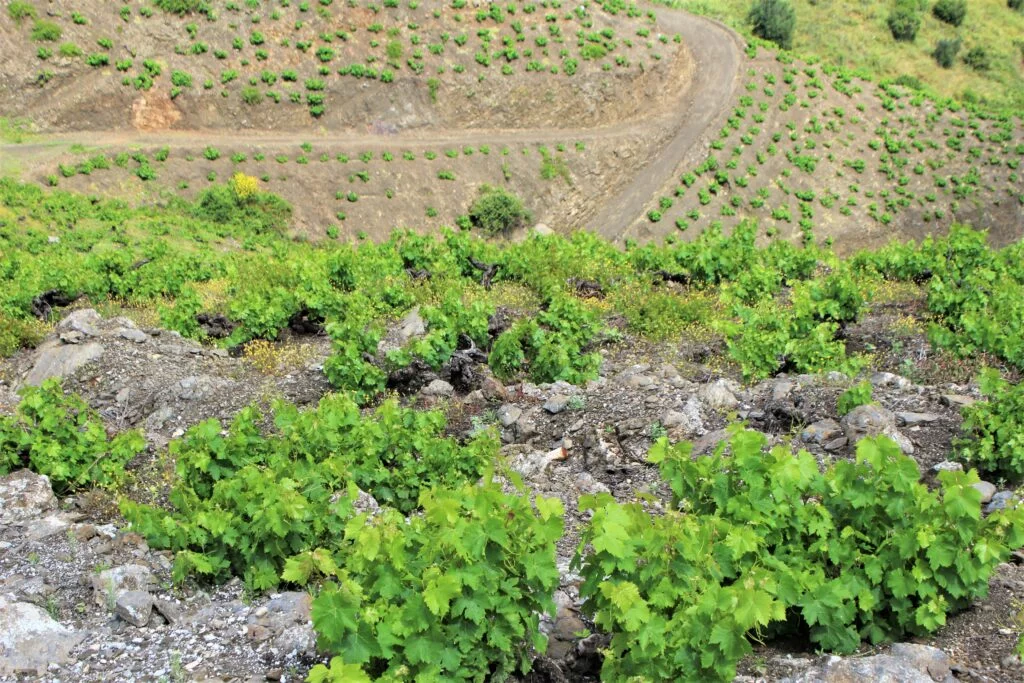
In fact, some vineyards are cultivated on slopes of up to 60%. To give you an idea, on the mountain roads, by car, the roads have a maximum of 33%.
This crop is one of only 50 sites in the world registered by the UN, via the FAO, as SIPAM (System of Ingenious World Agricultural Heritage).
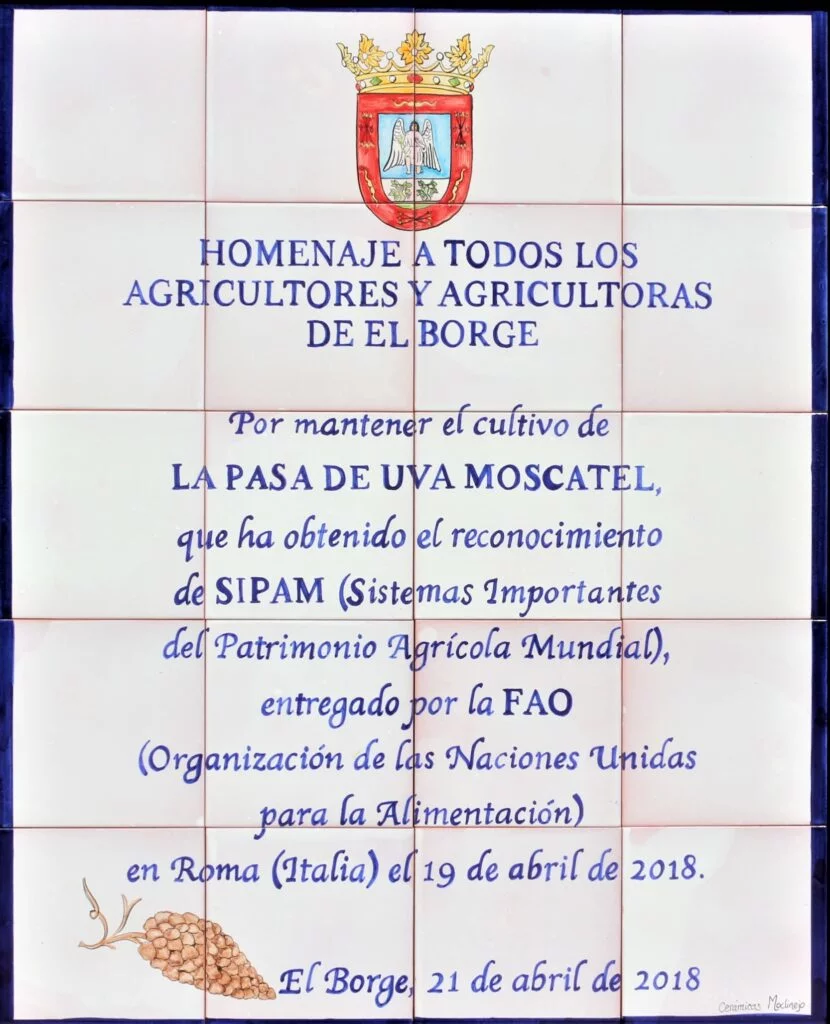
This distinction, awarded in 2018, is the recognition of a unique, ancestral culture with a strong social, cultural, traditional and environmental impact. Respect for the environment in a sustainable way is a key element in being recognised as SIPAM.
The historical elaboration of Malaga moscatel wine and Pedro Ximenez
It was carried out in 2 stages (see photos below):
First, there was the pisa, which consisted of treading the grapes with the feet.
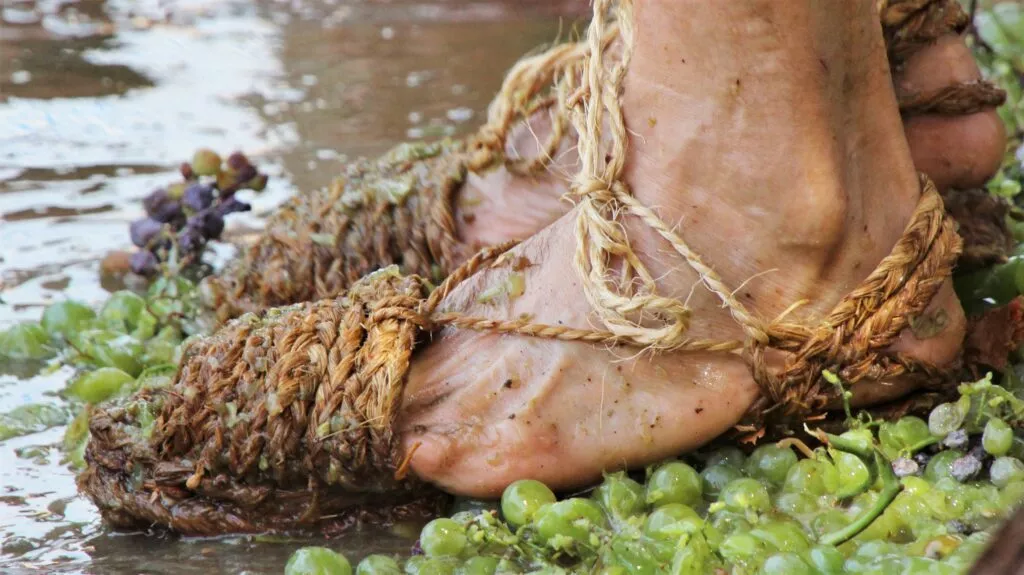
The juice obtained by this method was considered the best and was used to make the best bottles. The grape juice extracted using this method was called “la lagrima“, the tear.
After crushing, the grapes were pressed to extract the maximum amount of juice.
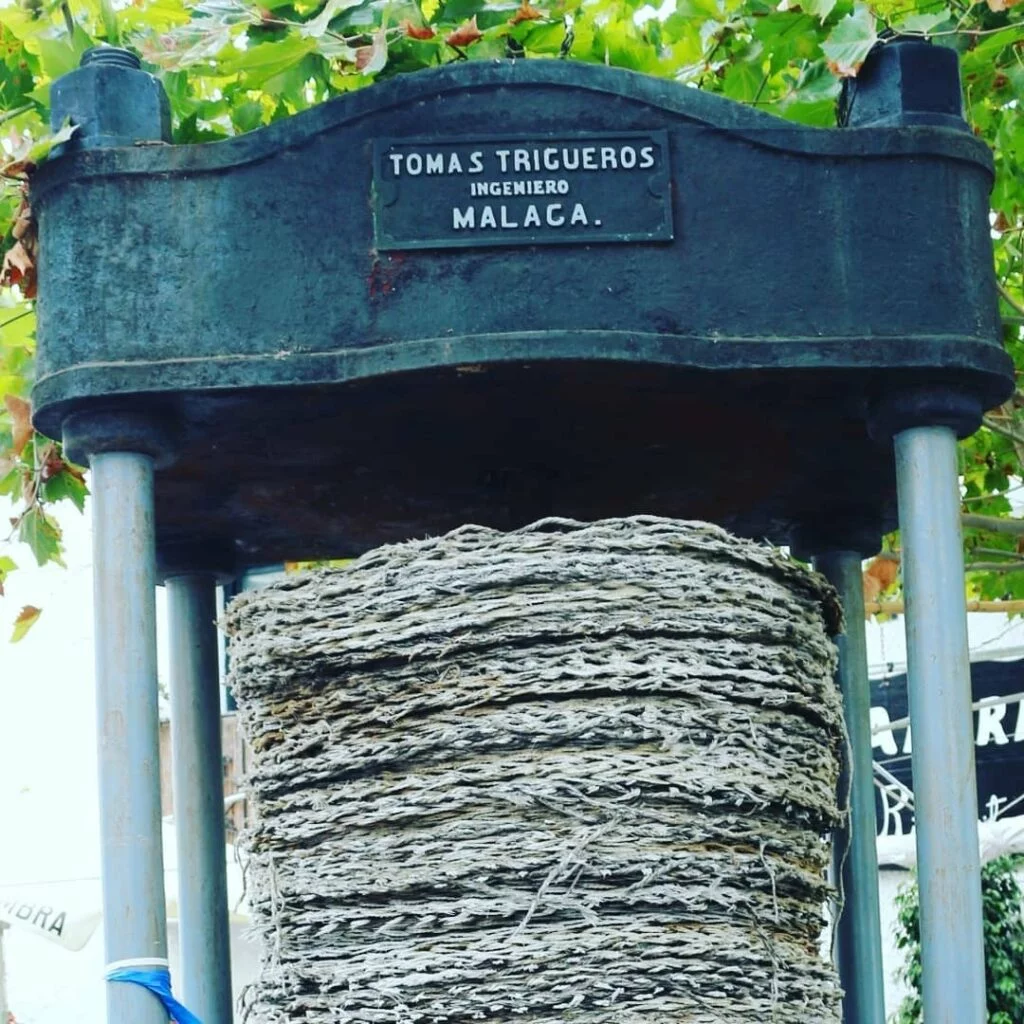
Both the pisa and the pressing were carried out in more or less basic lagares. These lagares can still be seen in the villages. They were used to carry out the pisa for individual wine productions.
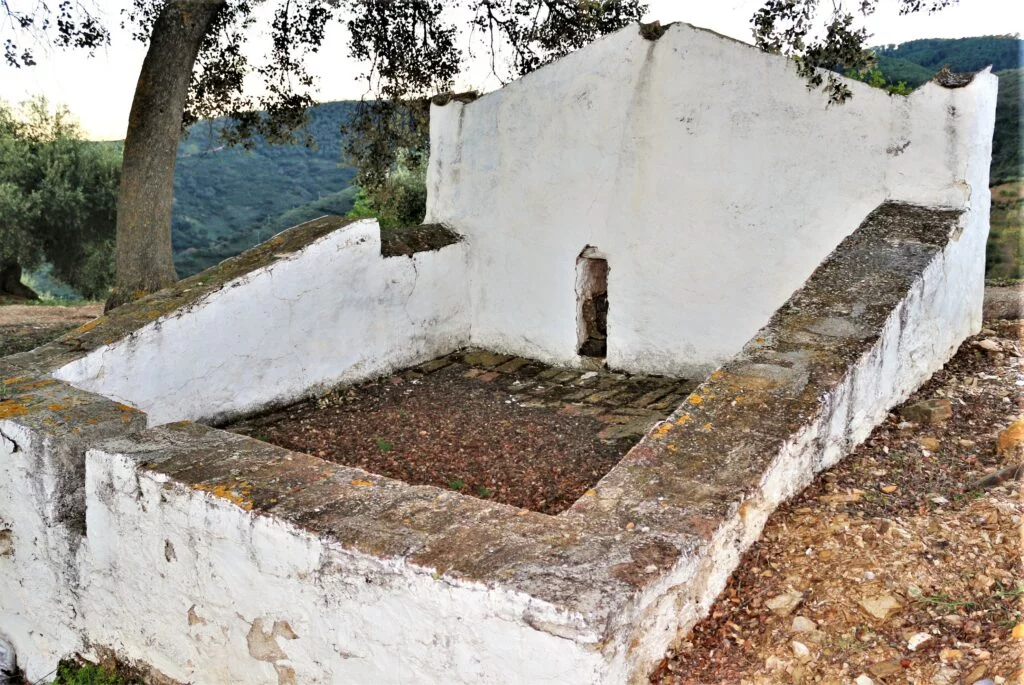
Finally, the wine was kept in large tinajas at the place of production, in the lagares.
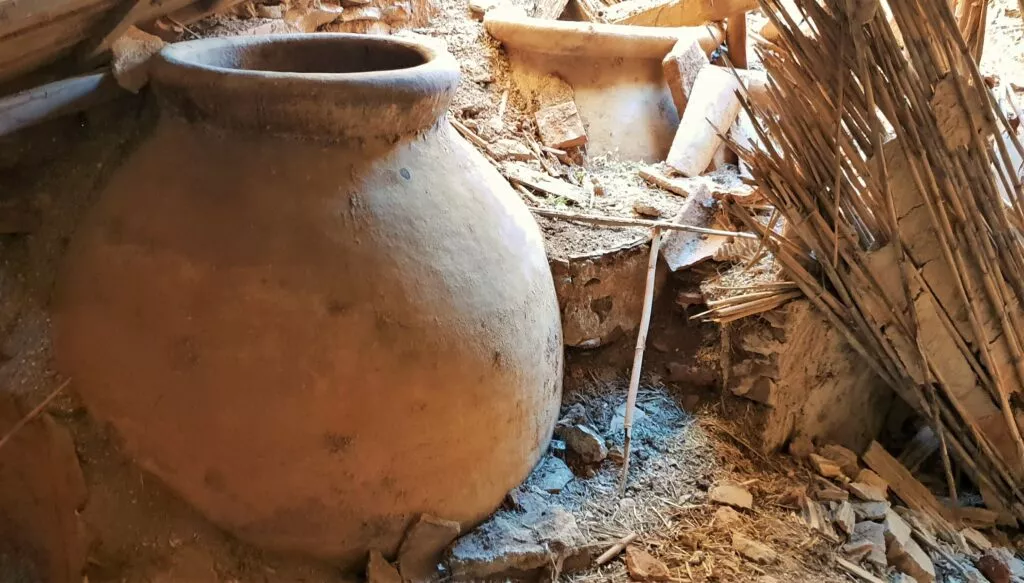
The transport of the wine to the villages was done with the help of mules. In order to allow the transport, the wine was put in goat skins!
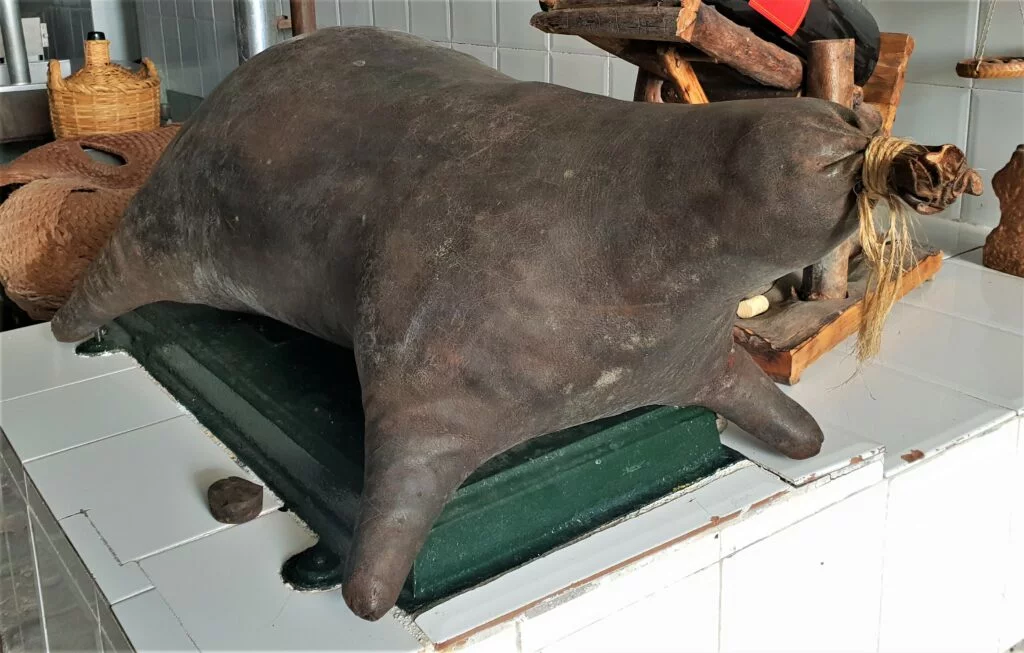
The Wine and Sun route with a guide
A local guide, Cipriano, offers to show you the wine and sun route. This day trip is offered from Nerja, Torrox Costa and Torre del Mar.
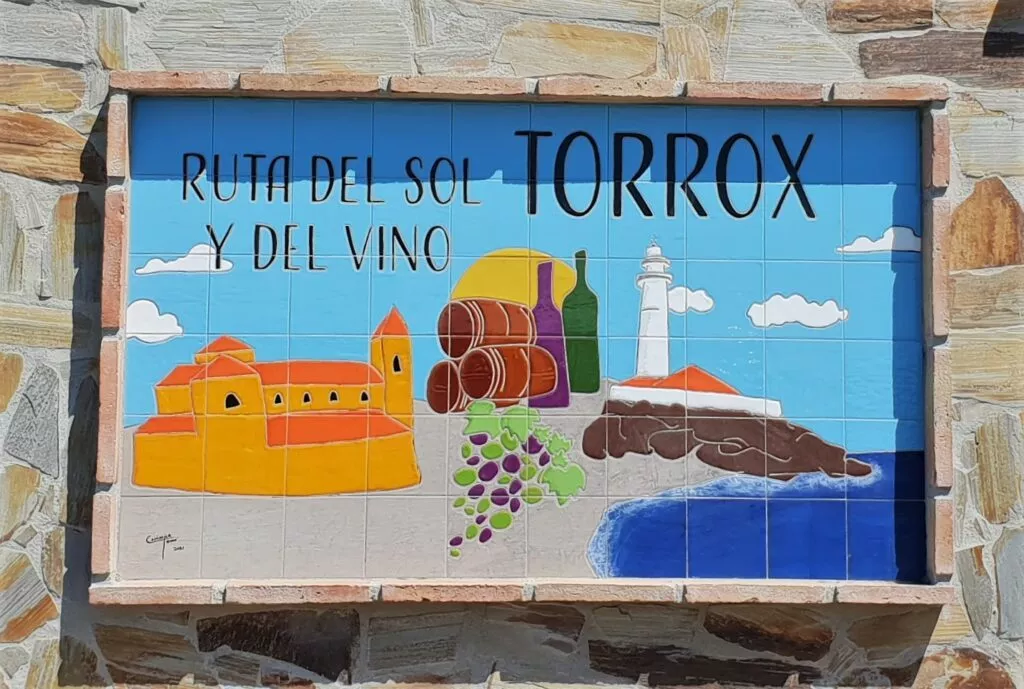
During this excursion you will pass through 3 beautiful white villages and a bodega. You will participate in a tasting of different Malaga Moscatel wine. Among these wines you will taste the one that was served at the wedding banquet of Felipe VI and Letizia.
For more information: Wine and Sun Route in Axarquia.
The Raisin route (Ruta de la Pasa) with a guide
This is an excursion along a unique route in the world: the Ruta de la Pasa (Raisin Route).
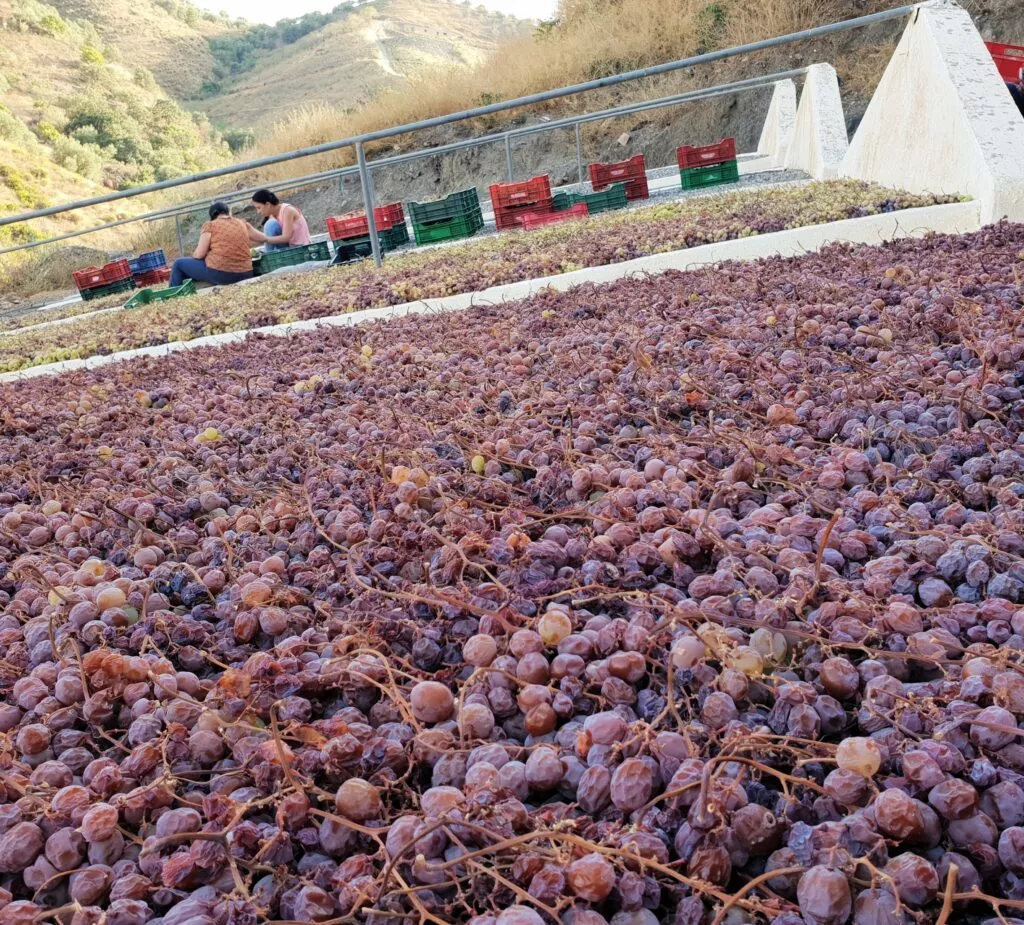
This tour is only possible 2 months a year. You will discover the traditions and cultures around the sun-dried muscatel grapes.
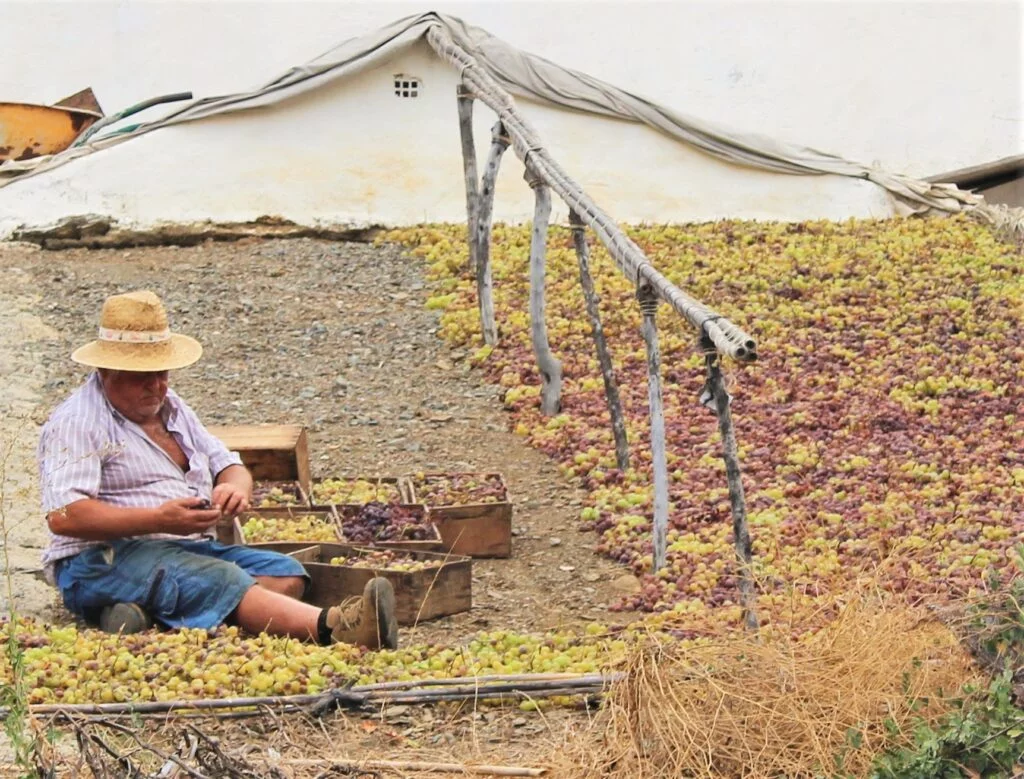
For more information: The Raisin Route in Axarquia.
Fiestas and Ferias around grapes and Moscatel wine
Below you will find links to the different fiestas and ferias, of grapes and wine, celebrated in the villages of Axarquia
- Dia de la uva moscatel, in Iznate, in August
- Fiesta de los vineros, in Moclinejo, in September
- Feria del mosto y de la chacina, in Colmenar, in December
- Dia de la Pasa, in El Borge, in September
- Noche del vino (Wine night) in Competa in August
The Noche del Vino in Competa is a magnificent festival. During the day, you can watch a demonstration of pisa. This is the crushing of grapes to make wine. Below is a photo taken during this festival:
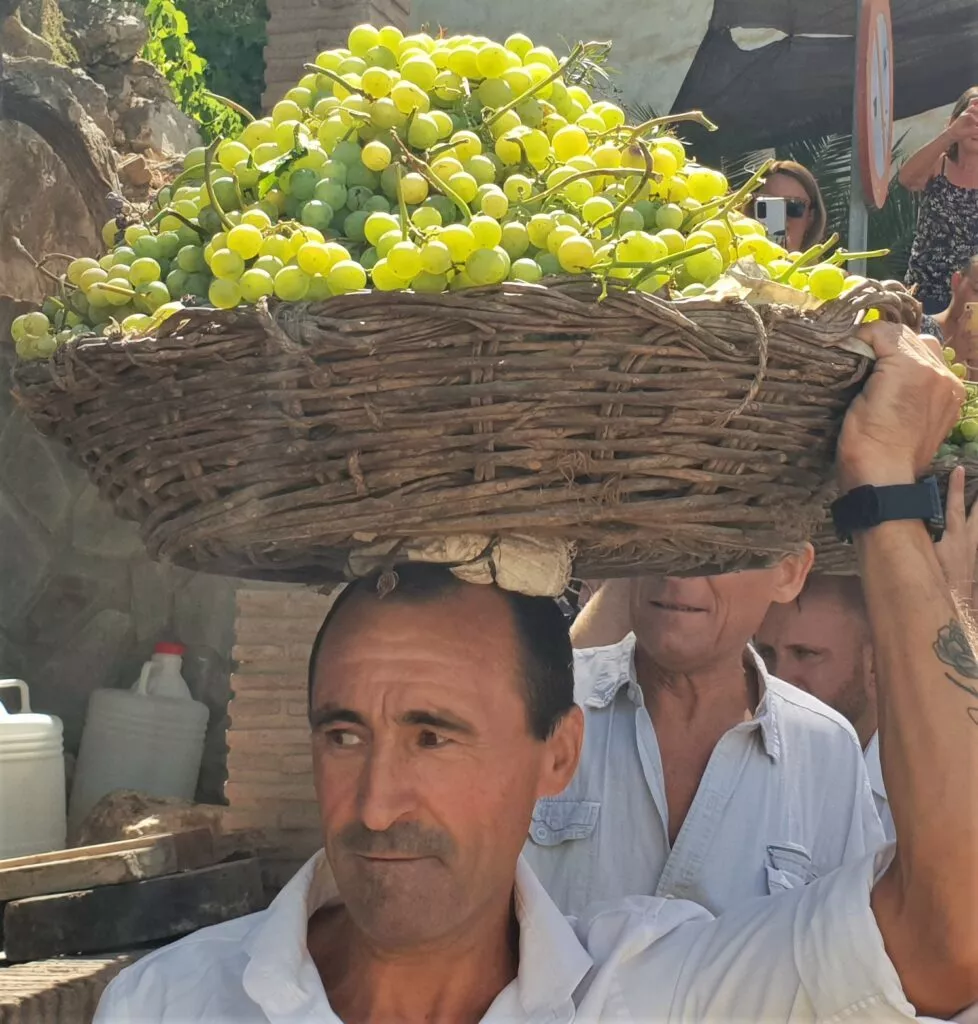
These festivals take place in the following villages (in order): Iznate, Moclinejo, Competa, Colmenar, El Borge.
Photos of vineyards, moscatel grapes and pasa in Axarquia
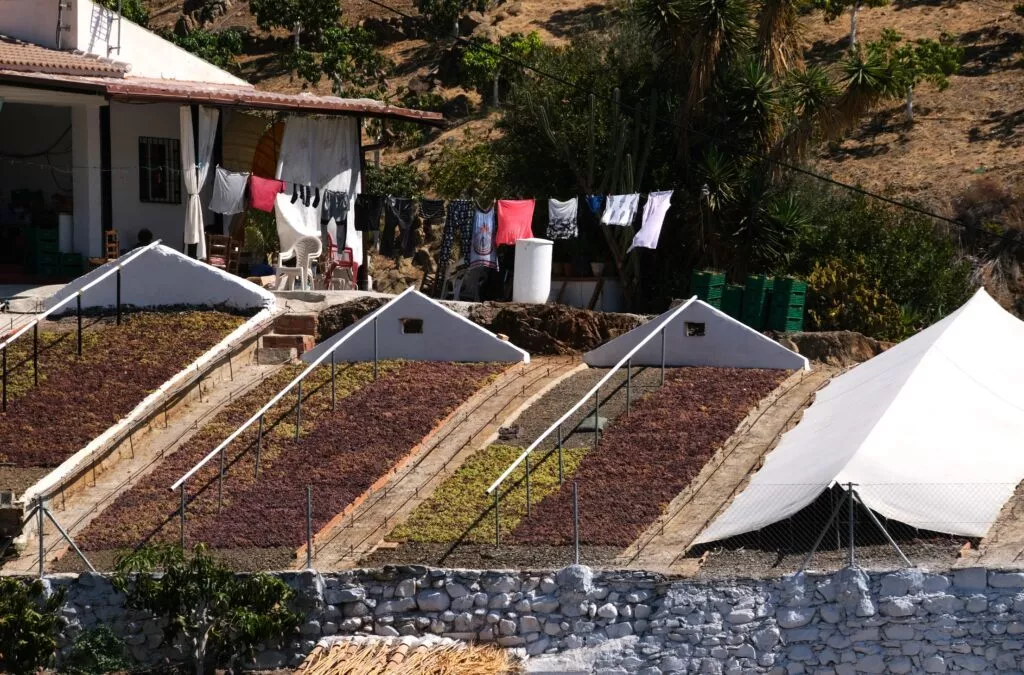
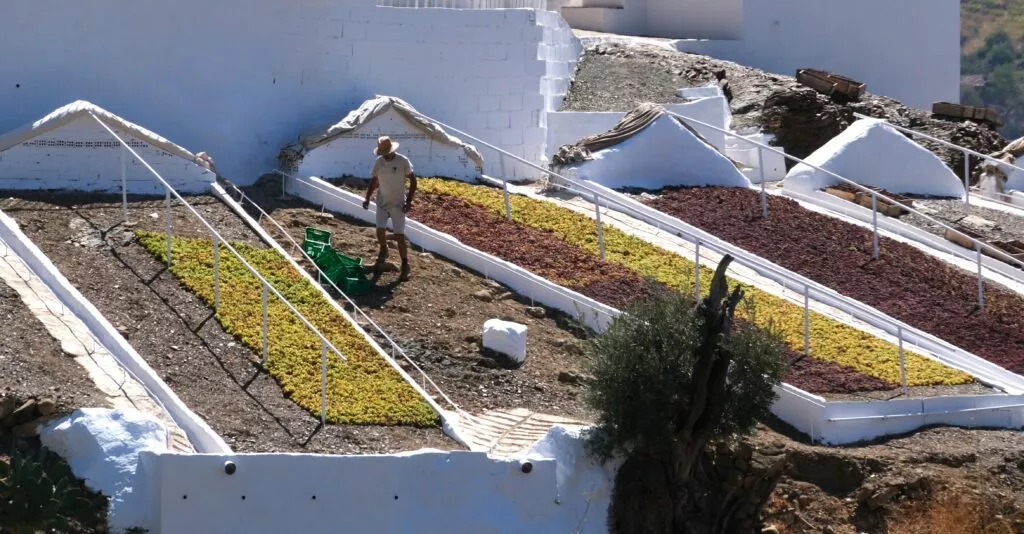
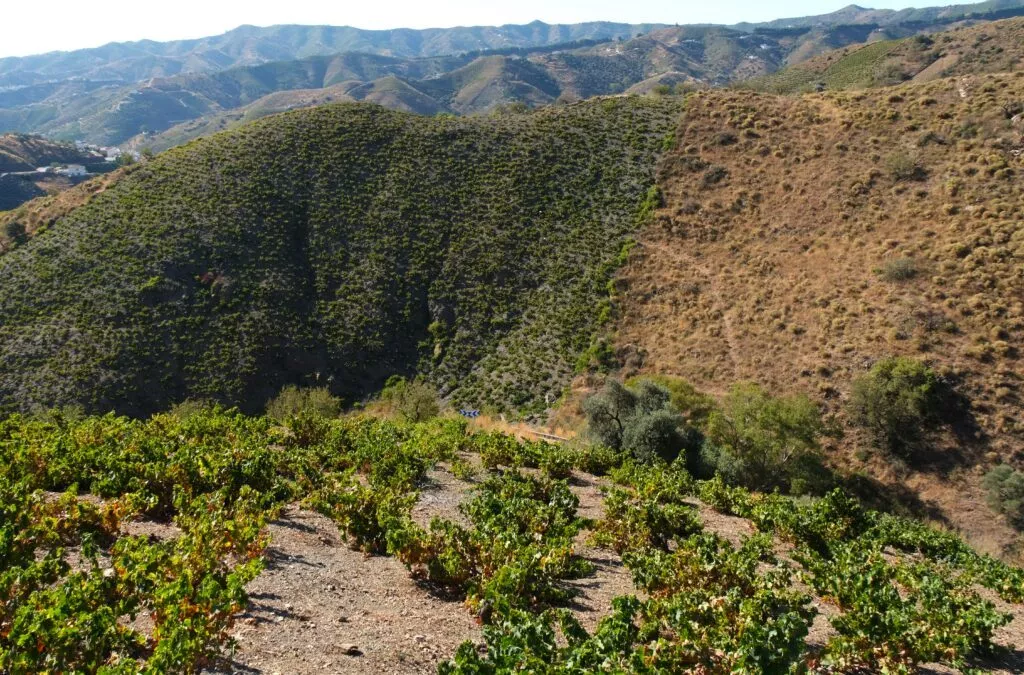
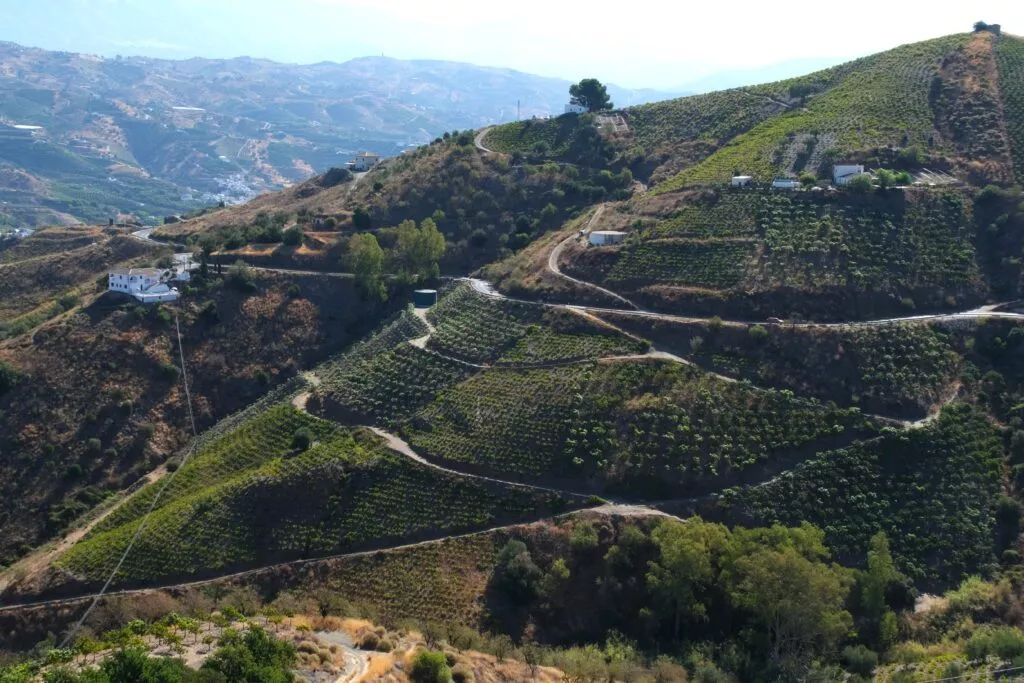
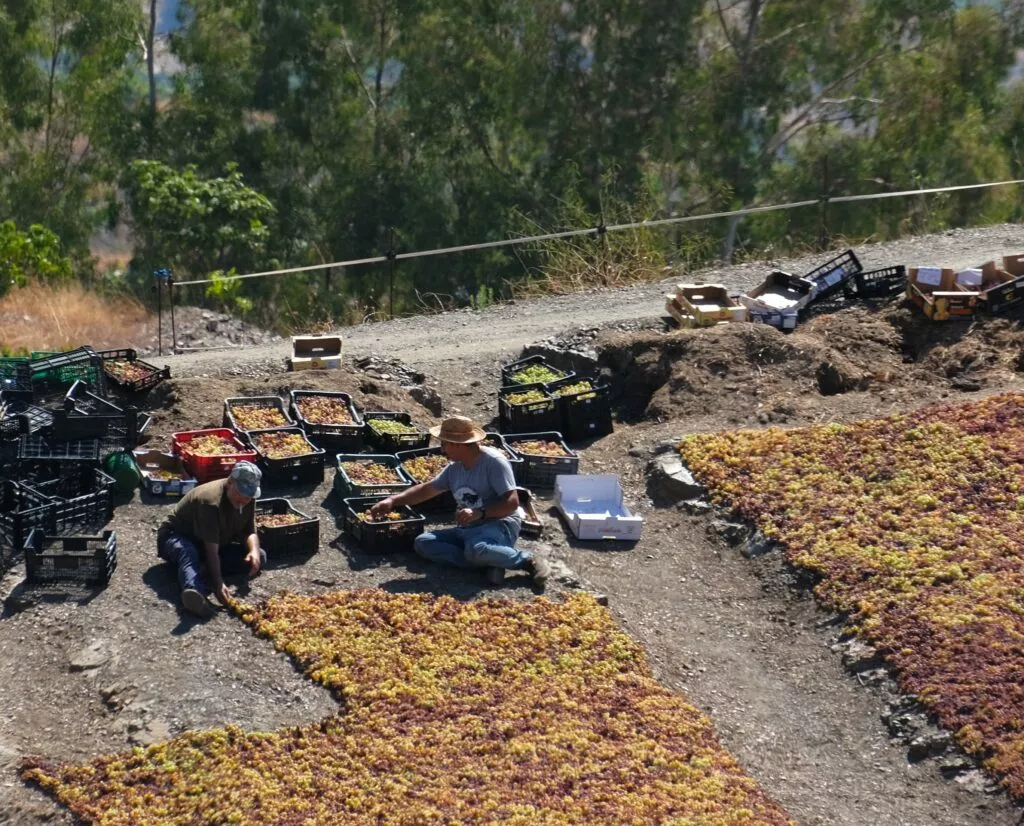
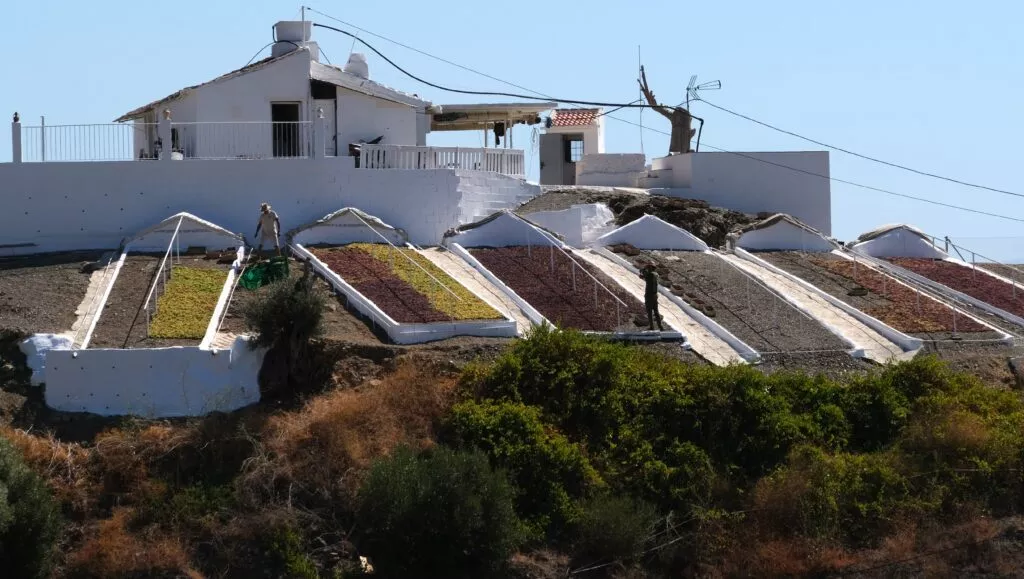

Here is another vine, rare and endemic to Axarquia
There is a rare vine, endemic to Axarquia. It is a vine that “survived” the Phylloxera epidemic in the 19th century. It is called Romé. Today, this vine produces some of the best DO Sierras de Málaga wines.
In the following link you will find information about this vine, the Romé.
Some useful links
Here is a link to other articles on Axarquia.
If you are in Andalucia as part of a tour with several major cities to visit, here are some links that may be of interest:
- Discover must-sees before visiting Cordoba
- Visit Malaga on foot.
- All you need to know about Granada, the Alhambra, the Albaicin neighbourhood before visiting Granada
- If you are passing through the geographical centre of Andalusia, then you can visit Antequera, with the incredible natural site of El Torcal right next door
Experiences to discover in the province of Málaga
Find more ideas for visits to authentic Andalusia: see the blog pages on Andalucia.
Here is the link to receive our newsletter from the andaluciamia.com blog
The latest articles on Andalucia
-
Interactive map of Andalucia with best places to see
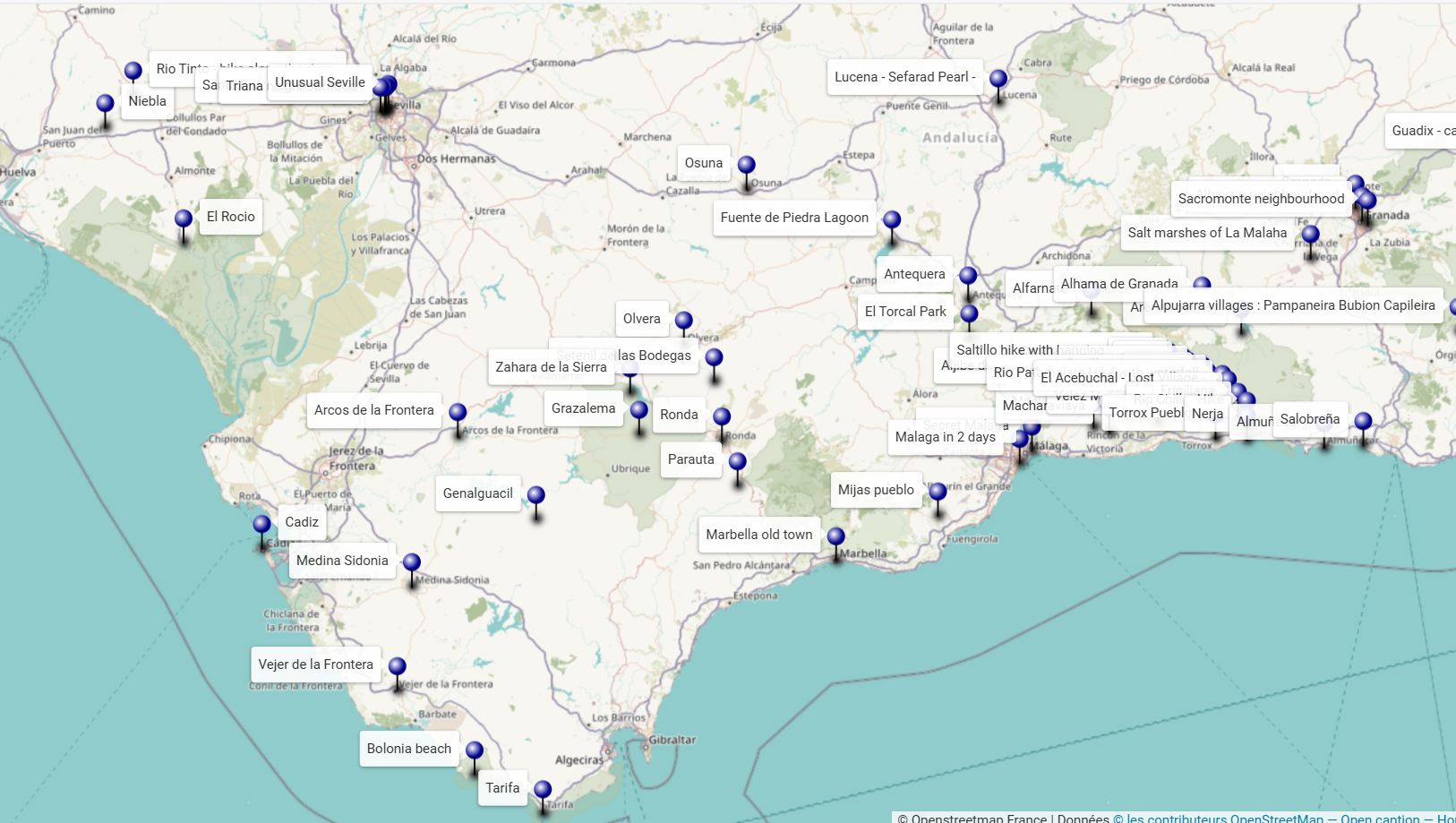
An interactive map of Andalucia to discover the sites to see around your holiday destination or to prepare a tour or road-trip.
-
Top 15 Must-See Attractions in Ubeda, Spain
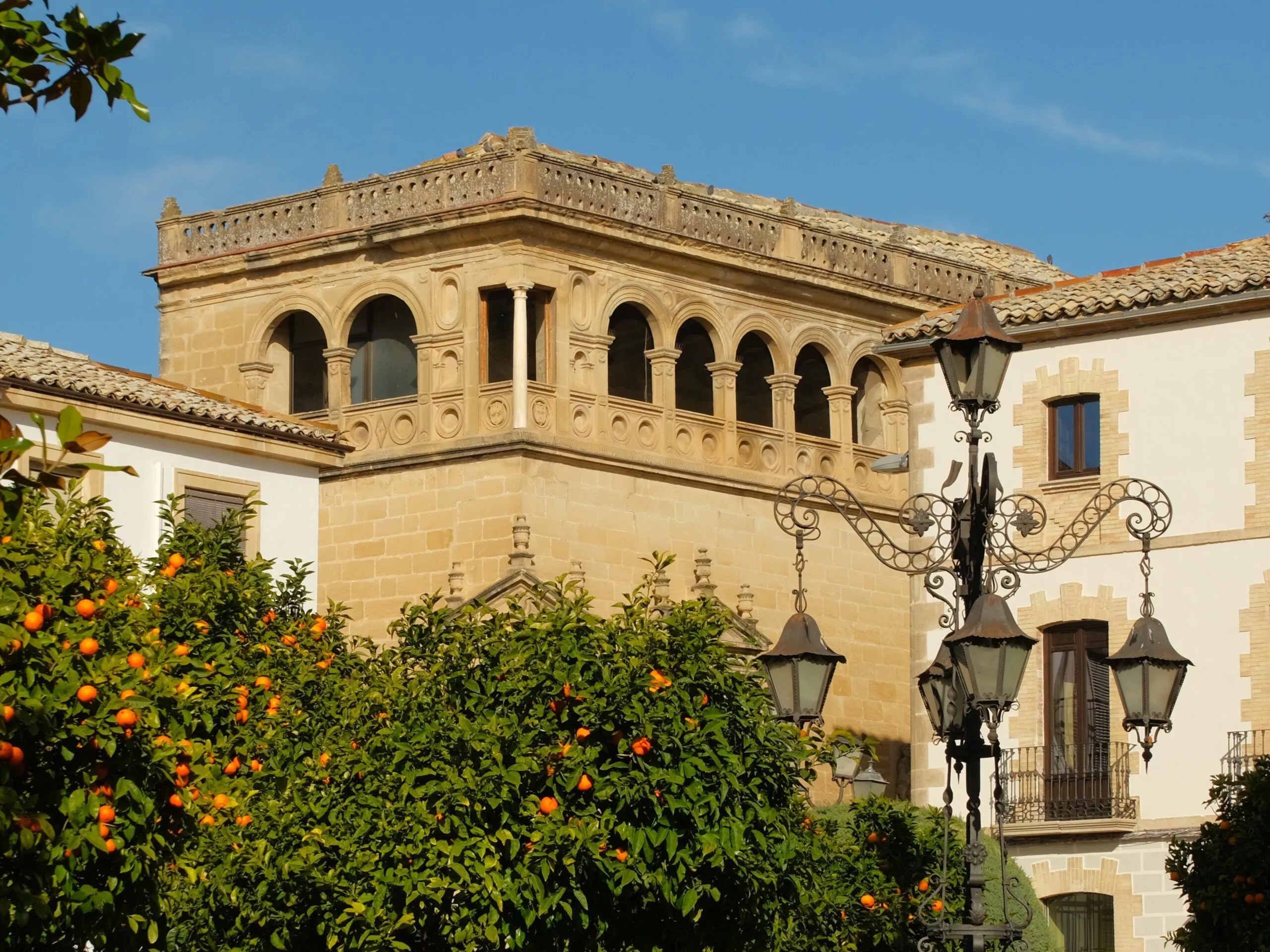
Here are the best places to visit and what to see in Ubeda. This Renaissance-style capital city of Andalusia is a marvel.
-
Visit Olula del Rio, the Mujer de Almanzora and the museum
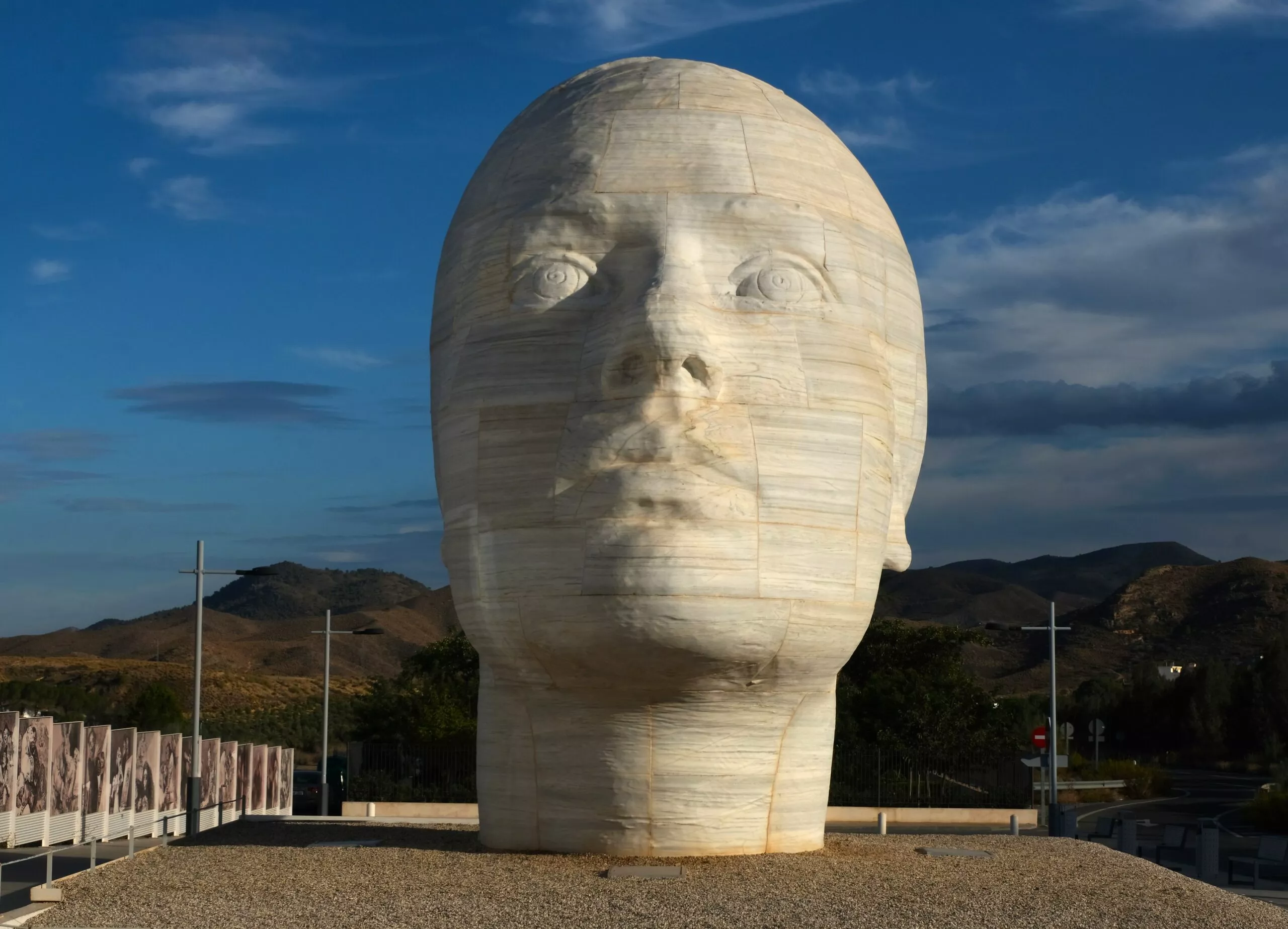
Olula del Rio see its 3 wonders: an extraordinary marble sculpture, a surprising museum and an incredible photography centre.
-
Fiesta del Queso in Zuheros Cordoba
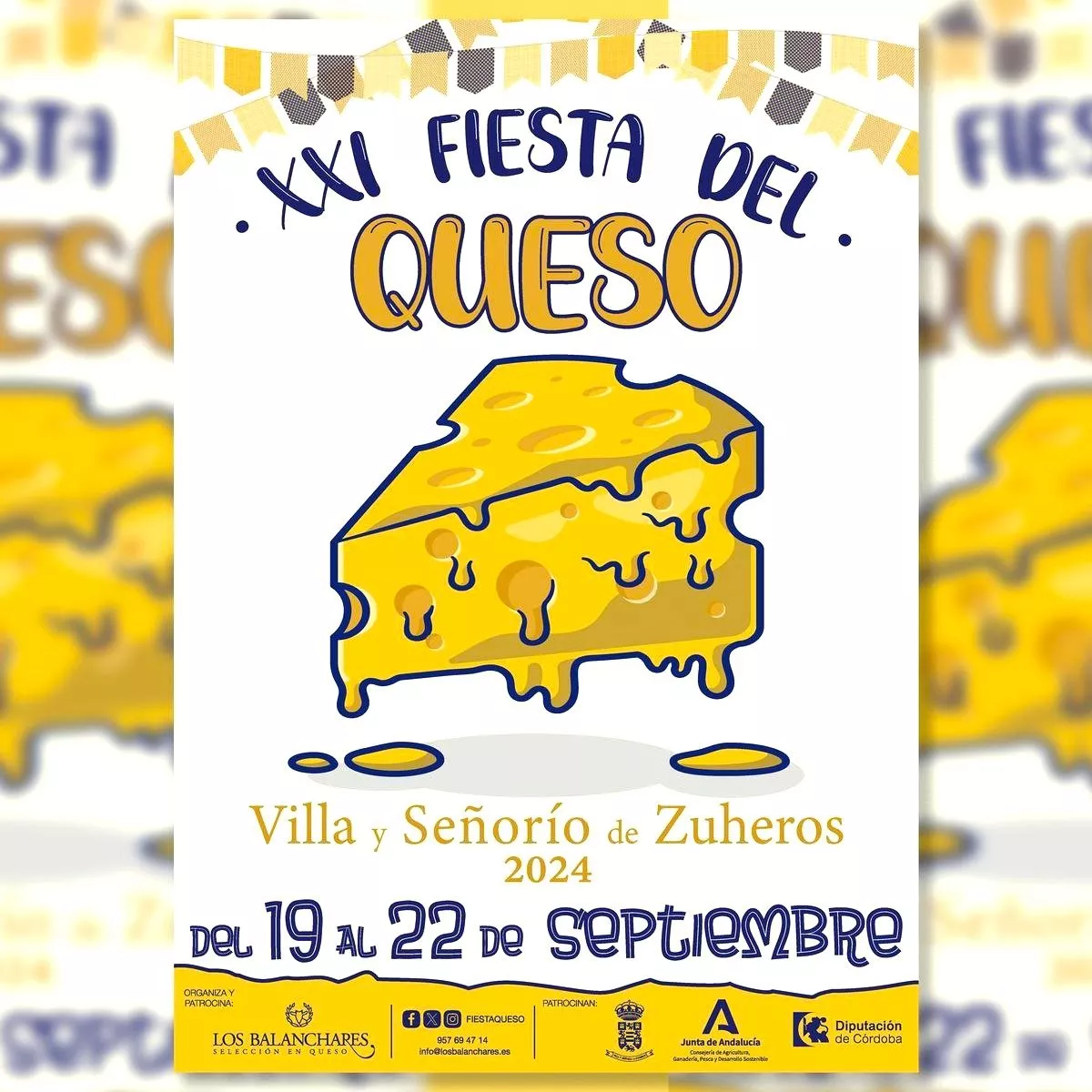
Discover the incredible Cheese Festival – Fiesta del Queso in Zuheros, one of the most beautiful white villages in Spain.
